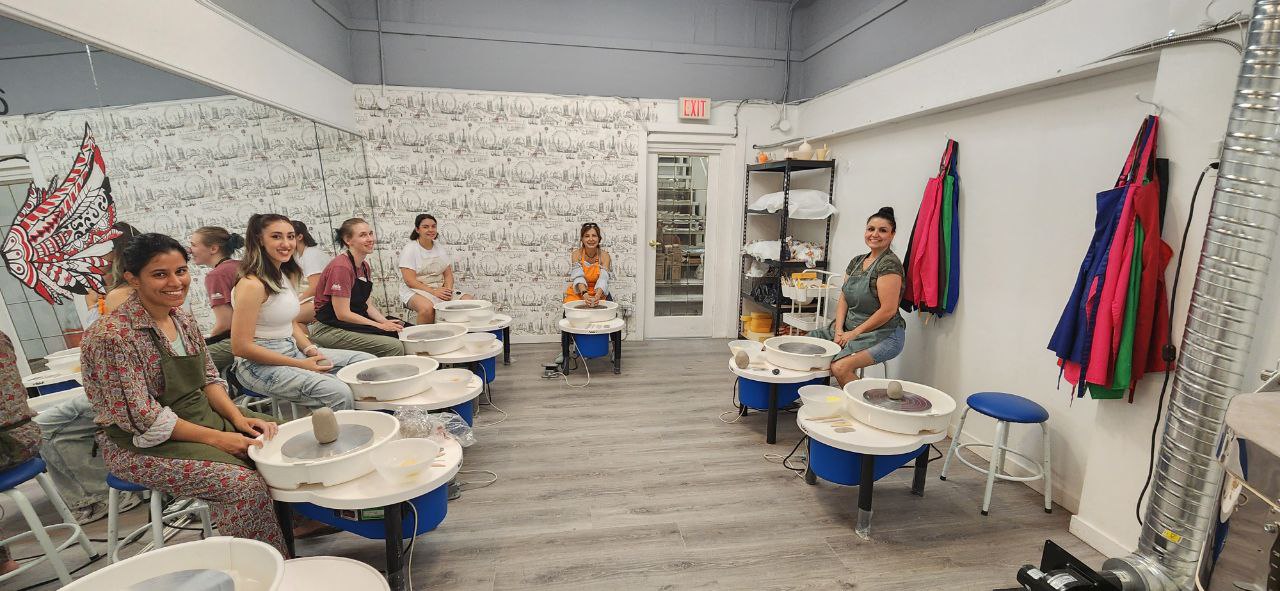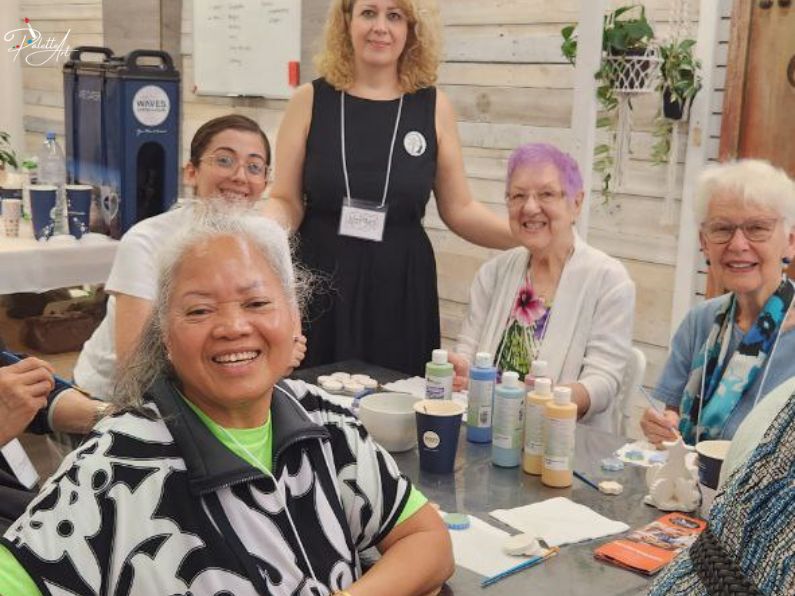Pottery has always been a beloved art form, combining creativity with hands-on craftsmanship. As an instructor, keeping your pottery wheel classes fresh and engaging is crucial for maintaining student interest and fostering artistic growth. In this article, we’ll explore seven innovative ideas to invigorate your pottery wheel sessions, ensuring they remain both fun and educational.
Contents
Mixing Two Different Colours of Clay
One exciting idea for pottery wheel classes is to introduce the technique of mixing two different colours of clay. Known as marbling, this process allows students to create striking, swirled designs that add a unique visual appeal to their pottery pieces. By experimenting with various colour combinations, students can produce one-of-a-kind patterns that stand out. This method is easy to learn, making it an accessible yet creative addition to any pottery class.
Themed Projects
Themed projects are a fantastic way to spark creativity and challenge students to think beyond the usual. Consider hosting classes centered around specific themes, such as “Nature’s Beauty” or “Abstract Expression.” For example, a “Seasonal Inspiration” theme could have students crafting pieces that reflect the colors and motifs of different seasons. This approach not only adds excitement to the class but also helps students to draw inspiration from the world around them, encouraging them to explore new ideas for pottery wheel classes and techniques.
Collaborative Pottery
Fostering a sense of community in your pottery wheel classes can be achieved through collaborative projects. Have your students work together on larger pieces, such as a communal vase, sculpture, or mural. This approach encourages them to share techniques, learn from each other, and contribute to a single, cohesive artwork. Collaborative pottery projects often result in innovative outcomes that would be challenging to achieve individually, making it a rewarding experience for all involved. This is one of the most impactful new ideas for pottery wheel classes that can inspire collective creativity.
Advanced Glazing Techniques
Glazing is a crucial part of pottery that can significantly enhance the final product’s appearance. To offer a more advanced learning experience, introduce your students to complex glazing techniques. Encourage them to experiment with layering glazes, using various application tools, or incorporating sgraffito (scratching designs into the glaze) or under-glazing (applying designs beneath a clear glaze). These advanced methods allow for more personalized and intricate finishes, turning simple pottery pieces into extraordinary works of art.
Incorporating Technology
Modernizing your pottery wheel classes by incorporating technology can offer students a unique and contemporary experience. For instance, using 3D printers to create custom molds or templates can streamline the creative process and introduce students to new possibilities in design. Additionally, digital design tools, such as CAD software, can help students visualize and plan their projects before they start working with clay. By merging traditional pottery techniques with modern technology, you can provide students with one of the most exciting new ideas for pottery wheel classes that keeps them engaged and inspired.
Pottery with Purpose: Functional Art
Introducing the concept of functional art in your classes can inspire students to create pottery that serves a practical purpose. Encourage students to design and craft everyday items such as mugs, bowls, planters, or even kitchenware that are not only aesthetically pleasing but also useful. This approach can lead to a deeper understanding of form and function in art, challenging students to think critically about the relationship between their creative work and its use in daily life.

Art Therapy for Seniors
Art therapy for seniors is a powerful approach that can be integrated into pottery wheel classes to enhance mental well-being and foster creativity. Pottery can be particularly therapeutic for older adults, offering a tactile and engaging activity that stimulates both the mind and body. By focusing on the process rather than the outcome, seniors can find joy and relaxation in working with clay, making it a meaningful addition to any pottery program.
Painting Class for Kids in Burnaby
Expanding your offerings to include diverse age groups can also breathe new life into your studio. For instance, you might consider starting a painting class for kids in Burnaby alongside your pottery wheel sessions. This not only diversifies your class portfolio but also attracts different audiences, bringing more foot traffic to your studio and creating a vibrant, multi-generational learning environment.
Pottery Wheel Challenges
To add a competitive edge and push students out of their comfort zones, consider introducing pottery wheel challenges. These could involve time-based competitions where students have to create a piece within a limited timeframe, or skill-based challenges that require them to incorporate specific techniques or materials. These challenges can foster a fun, dynamic environment and encourage students to experiment with new ideas and approaches they might not have considered otherwise.
Conclusion
Keeping your pottery wheel class fresh and innovative is essential for maintaining student engagement and enthusiasm. By introducing new ideas for pottery wheel classes like marbling techniques, themed projects, collaborative pottery, advanced glazing methods, and the integration of technology, you can create an exciting learning environment. These strategies ensure that every class offers a unique and rewarding experience, helping your students to grow as artists and keep their passion for pottery alive.
For more inspiration on running successful art classes in Canada, check out Artscape Daniels Launchpad, a creative hub that offers various resources and support for artists and instructors across the country.


